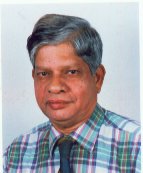Thursday, October 21, 2010
Coppin scientists simulate the most efficient solar cells
Coppin scientists simulate the most efficient solar cells Researchers from Coppin State University’s nanotechnology research center made history for simulating the most efficient solar energy cells in the world. Dr. Jamal Uddin ), Coppin State Natural Sciences professor and five undergraduate students modeled nearly 4% more efficient solar cells than Spectrolab, the Boeing Company based in California that held the title for most cells simulated since 2006.
NASA technologist talks CNTs, nanowires, PCMs, and commercialization of nanotechnology - Small Times
NASA technologist talks CNTs, nanowires, PCMs, and commercialization of nanotechnology - Small Times October 21, 2010) -- Speaking at the bi-monthly IMAPS luncheon (Santa Clara, CA; 10/6/10), Dr. Meyya Meyyappan, chief scientist for exploration technology at the Center for Nanotechnology at NASA Ames Research Center, discussed his group’s research in carbon nanotubes (CNTs), nanowires, and phase-change memories (PCM), as well as a next-generation non-volatile resistive switching memory.
Thursday, October 14, 2010
I-Micronews - NANOMATERIALS TECHNO: Tyndall nano-material reduces energy consumption in ...
I-Micronews - NANOMATERIALS TECHNO: Tyndall nano-material reduces energy consumption in ... Tyndall National Institute, UCC announced at the 2010 International Power Supply on Chip Workshop in Cork, the development of a new nano-material that will dramatically reduce the operating temperature of silicon chip components and circuits, thereby enhancing the reliability and lifetime of electronics in products ranging from smart phones to automotive electronics.
Saturday, October 9, 2010
Scientists reveal battery behavior at the nanoscale
Scientists reveal battery behavior at the nanoscale As industries and consumers increasingly seek improved battery power sources, cutting-edge microscopy performed at the Department of Energy's Oak Ridge National Laboratory is providing an unprecedented perspective on how lithium-ion batteries function.A research team led by ORNL's Nina Balke, Stephen Jesse and Sergei Kalinin has developed a new type of scanning probe microscopy called electrochemical strain microscopy (ESM) to examine the movement of lithium ions through a battery's cathode material. The research is published in Nature Nanotechnology.
Thursday, October 7, 2010
The strongest organic nanomaterial?
The strongest organic nanomaterial? A revolutionary new spherical nanostructure, fully derived from simple organic elements, yet strong as steel, has been developed and characterized at the laboratories of Ehud Gazit of Tel Aviv University, Israel, and Itay Rousso of the Weizmann Institute of Science, Rehovot, Israel.
Tuesday, October 5, 2010
Graphene Researchers Geim and Novoselov Win Nobel Prize in Physics [Updated]: Scientific American
Graphene Researchers Geim and Novoselov Win Nobel Prize in Physics [Updated]: Scientific American Andre Geim and Konstantin Novoselov, both of the University of Manchester in England, shared the prize for their work producing and characterizing the material, which is a one-atom-thick layer of carbon resembling a nanoscale chicken wire. The new physics laureates were announced October 5 at the Royal Swedish Academy of Sciences in Stockholm.
Subscribe to:
Posts (Atom)




